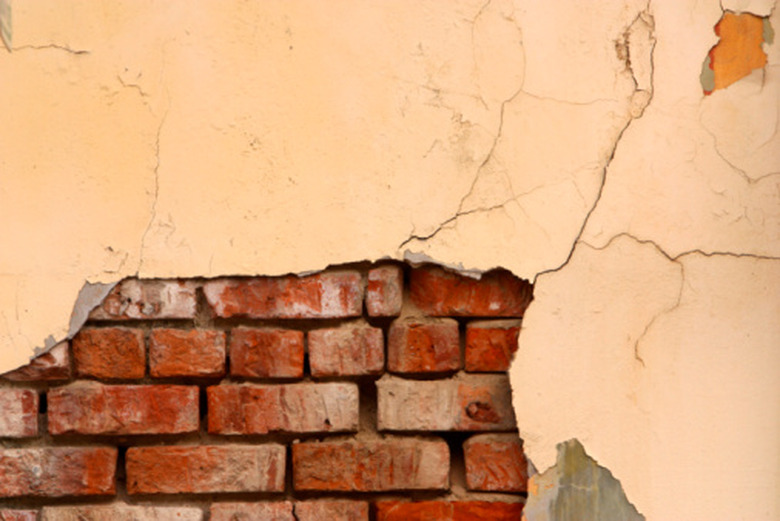What To Do About Crumbling Brick?
Brick homes are sturdy and usually require very little maintenance. However, when walls or other structures made of brick are allowed to stay wet for long periods, they begin to crumble. Surface repairs won't fix the problem though they might improve the brick's appearance in the short term. To deal with crumbling brick, address the underlying moisture problem and remove all damaged material.
Causes
Causes
Brick and mortar are porous materials that absorb moisture when they're in contact with the ground, when splashed with water regularly or when a house has poor drainage. Over time, the mortar between the bricks loses its adhesive properties, turning crumbly and sandy. The bricks themselves might even crack and break due to frost action.
Prevention
Prevention
Keep brick walls from crumbling by keeping them dry. Maintain gutters carefully, removing all debris regularly and ensuring that downspouts work correctly. If a gutter leaks onto the ground near the house, the water seeping into the wall can cause serious damage. Maintain proper drainage around the house; if the ground slopes toward the wall, water moves closer to the foundation rather than away from it. Reduce the danger of splashing water from swimming pools, hoses and other water sources by keeping them well away from brick walls. Check mortar stability every few years to ensure the brick remains solid. If the mortar seems to be sandy, it may need to be removed and replaced.
Repair
Repair
To fix a crumbling brick wall, determine the source of the moisture damage and remove it. If the problem is leaking ground water, this may require digging down beside the foundation and applying a waterproof sealer followed by installation of a French drain. Scrape out all crumbling mortar, and fill the gap with a mix approximating the original mortar composition. Use a narrow pointing trowel to reduce mess, and work on a warm day to improve drying time. Replace any damaged or broken bricks with new ones of the same size.
Considerations
Considerations
Not all mortars work the same way. Many old houses were built using a lime and sand-based mortar, which is more flexible than modern Portland cement-based materials. Use only mortars similar to the original, since changes in mortar strength and flexibility can hurt the wall over time. According to This Old House, Portland cement mortar can actually break the faces off bricks. Have the old mortar analyzed, and use a mixture of sand, lime and cement in similar proportions for best results.
Warning
Warning
Never simply remortar bricks without removing the old material or repairing the underlying problem. The outside of the repair may look good, but the mortar and brick underneath will continue to crumble. Over time, this could cause major structural problems.
